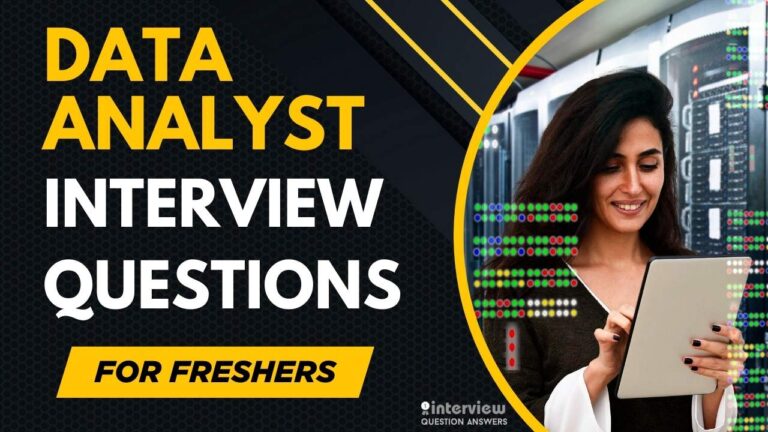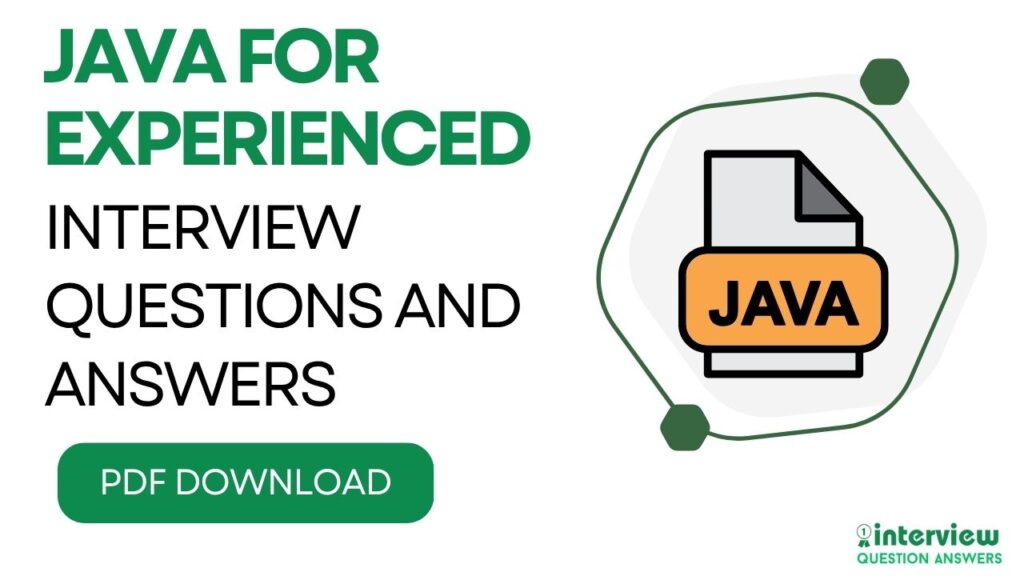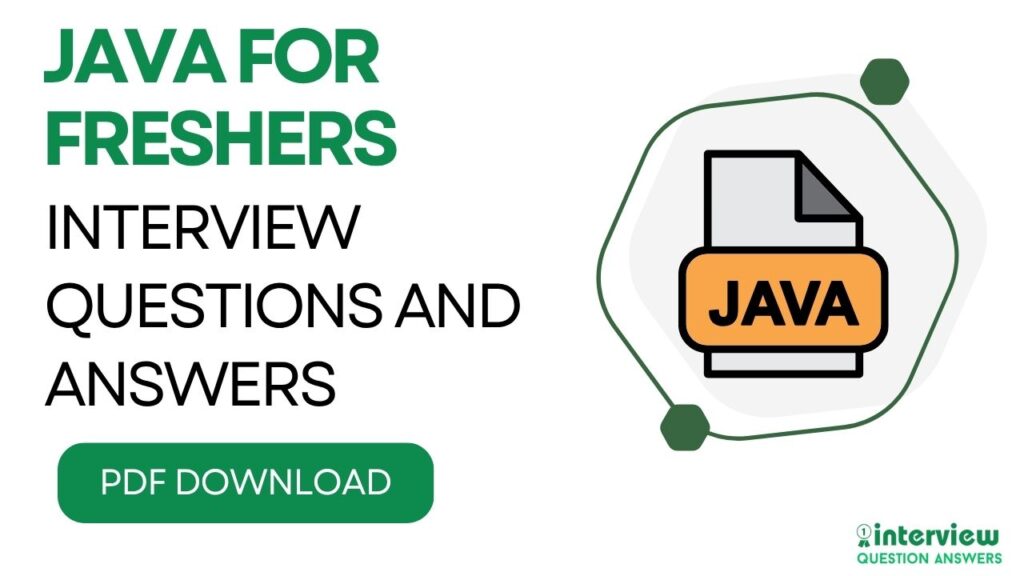Top 50 Machine Learning Engineer Interview Questions for Freshers 2025
Machine Learning Engineer Interview Questions for Freshers focus on fundamental ML concepts, programming skills, and model deployment techniques that entry-level candidates must demonstrate. Breaking into machine learning engineering requires mastering both theoretical knowledge and practical implementation that employers seek from new graduates.
Here we covered Machine Learning Engineer Interview Questions for Freshers seeking their first role in this rapidly growing field, addressing Python programming, algorithm implementation, model evaluation, and MLOps basics. These Machine Learning Engineer Interview Questions for Freshers will help you showcase your technical abilities, understanding of ML pipelines, and readiness to build production-ready machine learning systems in today’s AI-driven market.
You can also check this guide: Machine Learning Engineer Interview Questions PDF
Basic Machine Learning Engineer Interview Questions for Freshers
Que 1. Explain how you would preprocess a dataset with missing values, categorical variables, and outliers. Provide code snippets for each step.
Answer: Data preprocessing is a critical step in machine learning. For missing values, you can use imputation (mean, median, or mode) or drop missing entries if the dataset is large. Categorical variables are typically encoded using one-hot encoding or label encoding. Outliers can be handled using statistical methods like the IQR or Z-score, or by capping.
For missing values:
from sklearn.impute import SimpleImputer
imputer = SimpleImputer(strategy='mean')
data[['column']] = imputer.fit_transform(data[['column']])For categorical variables:
from sklearn.preprocessing import OneHotEncoder
encoder = OneHotEncoder()
encoded_data = encoder.fit_transform(data[['categorical_column']])For outliers, you can use the IQR method:
Q1 = data.quantile(0.25)
Q3 = data.quantile(0.75)
IQR = Q3 - Q1
data = data[~((data < (Q1 - 1.5 * IQR)) | (data > (Q3 + 1.5 * IQR))).any(axis=1)]Que 2. How would you evaluate the performance of a classification model? List at least three metrics and explain when to use each.
Answer: The choice of metric depends on the problem and data distribution. Common metrics include:
- Accuracy: Use when classes are balanced.
- Precision and Recall: Use when classes are imbalanced. Precision measures the accuracy of positive predictions, while recall measures the ability to find all positive instances.
- F1-Score: Use when you need a balance between precision and recall, especially for imbalanced datasets.
- ROC-AUC: Use when you need to evaluate the model’s ability to distinguish between classes across different thresholds.
Que 3. What is the difference between L1 and L2 regularization? How do they affect the model?
Answer: L1 regularization (Lasso) adds a penalty equal to the absolute value of the coefficients, which can lead to sparse models by driving some coefficients to zero. L2 regularization (Ridge) adds a penalty equal to the square of the coefficients, which tends to shrink coefficients but not eliminate them. L1 is useful for feature selection, while L2 is better for handling multicollinearity.
Que 4. How do you handle overfitting in a machine learning model?
Answer: Overfitting occurs when a model learns noise in the training data. To mitigate it:
- Use regularization techniques like L1 or L2.
- Apply cross-validation to tune hyperparameters.
- Prune decision trees or reduce model complexity.
- Use ensemble methods like bagging or boosting.
- Increase training data if possible.
Que 5. Implement a simple linear regression model from scratch using gradient descent.
Answer: Here’s a basic implementation:
import numpy as np
def gradient_descent(X, y, learning_rate=0.01, epochs=1000):
m, n = X.shape
theta = np.zeros(n)
for _ in range(epochs):
predictions = X.dot(theta)
errors = predictions - y
theta -= learning_rate * (1/m) * X.T.dot(errors)
return thetaQue 6. What is the bias-variance tradeoff? How do you determine if your model is suffering from high bias or high variance?
Answer: The bias-variance tradeoff refers to the tension between a model’s ability to fit the training data (low bias) and its sensitivity to fluctuations in the data (low variance). High bias leads to underfitting, while high variance leads to overfitting.
- High Bias: The model is too simple and underfits the data. It performs poorly on both training and test data.
- High Variance: The model is too complex and overfits the data. It performs well on training data but poorly on test data.
Use learning curves to diagnose: if both training and validation errors are high, the model has high bias. If the training error is low but the validation error is high, the model has high variance.
Que 7. Explain the working of a decision tree algorithm. How does it make splits?
Answer: A decision tree recursively splits the data into subsets based on the value of input features. It selects splits that maximize information gain (or minimize impurity, measured by Gini index or entropy). The process continues until a stopping criterion is met, such as maximum depth or minimum samples per leaf.
Que 8. How would you implement a k-nearest neighbors (KNN) algorithm? What are its pros and cons?
Answer: KNN classifies a data point based on the majority class of its k nearest neighbors. Pros include simplicity and no training phase. Cons include high computational cost during prediction and sensitivity to the scale of features and the choice of k.
from sklearn.neighbors import KNeighborsClassifier
model = KNeighborsClassifier(n_neighbors=3)
model.fit(X_train, y_train)Que 9. What is the purpose of a confusion matrix? How do you interpret it?
Answer: A confusion matrix summarizes the performance of a classification model by showing true positives, true negatives, false positives, and false negatives. It helps calculate metrics like precision, recall, and F1-score. Predicted PositivePredicted Negative
- Actual Positive
- True Positive (TP)
- False Negative (FN)
- Actual Negative
- False Positive (FP)
- True Negative (TN)
Que 10. How do you select the value of k in KNN?
Answer: The value of k is typically chosen using cross-validation. Start with a small k (e.g., 3 or 5) and increase it, observing the model’s performance on a validation set. The optimal k balances bias and variance.
Que 11. Explain the concept of feature importance in tree-based models. How is it calculated?
Answer: Feature importance in tree-based models (e.g., Random Forest) is calculated based on how much each feature decreases the impurity (Gini or entropy) in the tree. Features used at the top of the tree are generally more important.
Que 12. What is the difference between bagging and boosting?
Answer:
- Bagging (e.g., Random Forest) builds multiple models independently on bootstrapped samples and averages their predictions to reduce variance.
- Boosting (e.g., AdaBoost, Gradient Boosting) sequentially corrects errors from previous models, focusing on misclassified samples to reduce bias.
Que 13. How would you implement a basic neural network using PyTorch?
Answer: Here’s a simple example:
import torch
import torch.nn as nn
class Net(nn.Module):
def __init__(self):
super(Net, self).__init__()
self.fc1 = nn.Linear(10, 5)
self.fc2 = nn.Linear(5, 1)
def forward(self, x):
x = torch.relu(self.fc1(x))
x = self.fc2(x)
return x
model = Net()
criterion = nn.MSELoss()
optimizer = torch.optim.SGD(model.parameters(), lr=0.01)Que 14. What is the role of activation functions in neural networks?
Answer: Activation functions introduce non-linearity, allowing neural networks to learn complex patterns. Common functions include ReLU, sigmoid, and tanh. ReLU is widely used due to its simplicity and effectiveness in mitigating the vanishing gradient problem.
Que 15. How do you handle class imbalance in a dataset?
Answer: Techniques include:
- Resampling: Oversampling the minority class or undersampling the majority class.
- Synthetic data generation (SMOTE).
- Using class weights in the loss function.
- Evaluating using metrics like precision, recall, or F1-score instead of accuracy.
Que 16. Explain the concept of batch normalization. Why is it used?
Answer: Batch normalization standardizes the inputs to a layer for each mini-batch, reducing internal covariate shift and allowing for higher learning rates and faster convergence.
Que 17. What is the difference between supervised and unsupervised learning?
Answer: Supervised learning uses labeled data to train models for tasks like classification or regression. Unsupervised learning finds patterns in unlabeled data, such as clustering or dimensionality reduction.
Que 18. How would you perform feature selection for a high-dimensional dataset?
Answer: Methods include:
- Filter methods: Select features based on statistical tests (e.g., chi-square, mutual information).
- Wrapper methods: Use a subset of features to train a model and evaluate performance.
- Embedded methods: Perform feature selection as part of the model training (e.g., Lasso, decision trees).
Que 19. What is the purpose of a validation set in machine learning?
Answer: A validation set is used to tune hyperparameters and evaluate model performance during training, helping to detect overfitting before testing on unseen data.
Que 20. How do you interpret the coefficients of a logistic regression model?
Answer: Coefficients indicate the change in the log-odds of the target variable for a one-unit change in the predictor. Positive coefficients increase the probability of the positive class, while negative coefficients decrease it.
Que 21. Explain the concept of cross-entropy loss. Why is it used in classification tasks?
Answer: Cross-entropy loss measures the difference between the predicted probabilities and the actual distribution. It is used in classification because it penalizes wrong predictions more heavily, especially when the model is confident but incorrect.
Que 22. How would you deploy a trained machine learning model as an API?
Answer: You can use frameworks like Flask or FastAPI to create an API endpoint that accepts input data, processes it through the model, and returns predictions.
from flask import Flask, request, jsonify
import pickle
app = Flask(__name__)
model = pickle.load(open('model.pkl', 'rb'))
@app.route('/predict', methods=['POST'])
def predict():
data = request.json
prediction = model.predict([data['features']])
return jsonify({'prediction': prediction.tolist()})Que 23. What is the difference between a parametric and non-parametric model?
Answer: Parametric models (e.g., linear regression) assume a fixed number of parameters and a functional form. Non-parametric models (e.g., decision trees, KNN) make no such assumptions and can fit more complex patterns.
Que 24. How do you choose between different machine learning algorithms for a given problem?
Answer: Consider factors like data size, interpretability, training time, and model performance. Start with simple models and gradually increase complexity if needed.
Que 25. Explain the concept of ensemble learning. Provide examples of ensemble methods.
Answer: Ensemble learning combines multiple models to improve performance. Examples include:
- Bagging: Random Forest
- Boosting: AdaBoost, Gradient Boosting, XGBoost
- Stacking: Combines predictions from multiple models using another model.

Also Check: Machine Learning Engineer Interview Questions for Experienced Professionals
Advanced Machine Learning Engineer Interview Questions for Freshers
Que 26. Explain the concept of transfer learning. How can it be applied in deep learning, and what are its advantages?
Answer: Transfer learning involves leveraging a pre-trained model on a new but related task. In deep learning, this is commonly done by using models trained on large datasets (e.g., ImageNet) and fine-tuning them for specific applications. Advantages include reduced training time, lower computational costs, and improved performance, especially when the new dataset is small.
For example, you can use a pre-trained ResNet model and fine-tune it for a custom image classification task:
from torchvision import models
model = models.resnet18(pretrained=True)
model.fc = nn.Linear(512, num_classes) # Replace the final layerQue 27. What is the difference between stochastic gradient descent (SGD), mini-batch gradient descent, and batch gradient descent?
Answer:
- Batch Gradient Descent: Uses the entire dataset to compute the gradient, which is computationally expensive but provides stable updates.
- Stochastic Gradient Descent (SGD): Uses a single random sample per iteration, leading to noisy updates but faster convergence.
- Mini-Batch Gradient Descent: Uses a small batch of samples per iteration, balancing computational efficiency and update stability. It is the most commonly used approach in practice.
Que 28. How does a convolutional neural network (CNN) work? Explain the role of convolutional layers, pooling layers, and fully connected layers.
Answer: A CNN is designed for grid-like data such as images. Convolutional layers apply filters to extract local features like edges and textures. Pooling layers (e.g., max pooling) reduce spatial dimensions, retaining the most important information. Fully connected layers at the end combine these features for classification or regression.
For example, a simple CNN in PyTorch:
class CNN(nn.Module):
def __init__(self):
super(CNN, self).__init__()
self.conv1 = nn.Conv2d(3, 16, 3)
self.pool = nn.MaxPool2d(2, 2)
self.fc1 = nn.Linear(16 * 13 * 13, 10)
def forward(self, x):
x = self.pool(F.relu(self.conv1(x)))
x = x.view(-1, 16 * 13 * 13)
x = self.fc1(x)
return xQue 29. What is the vanishing gradient problem, and how can it be addressed?
Answer: The vanishing gradient problem occurs when gradients become extremely small during backpropagation, preventing the network from learning. Solutions include:
- Using activation functions like ReLU or Leaky ReLU.
- Employing architectures like ResNet with skip connections.
- Using careful weight initialization (e.g., Xavier or He initialization).
- Batch normalization to stabilize activations.
Que 30. Explain the concept of attention mechanisms in deep learning. How is it used in transformer models?
Answer: Attention mechanisms allow a model to focus on specific parts of the input sequence, assigning higher weights to more relevant elements. In transformer models, self-attention computes relationships between all pairs of tokens in a sequence, enabling parallel processing and capturing long-range dependencies.
For example, the scaled dot-product attention formula:
Attention(Q, K, V) = softmax(QK^T / sqrt(d_k))VQue 31. What is the difference between a generative and discriminative model? Provide examples of each.
Answer:
- Generative Models: Learn the joint probability distribution P(X, Y) and can generate new data samples. Examples include Naive Bayes, GANs, and VAEs.
- Discriminative Models: Learn the conditional probability P(Y|X) and focus on decision boundaries. Examples include Logistic Regression, SVMs, and CNNs.
Que 32. How would you implement a basic recommendation system using collaborative filtering?
Answer: Collaborative filtering predicts user preferences by analyzing patterns of interactions between users and items. A simple approach is user-item matrix factorization using Singular Value Decomposition (SVD) or gradient descent.
Example using the surprise library:
from surprise import Dataset, SVD
data = Dataset.load_builtin('ml-100k')
algo = SVD()
algo.fit(data)
predictions = algo.test(data)Que 33. What is the role of hyperparameter tuning in machine learning? Name three techniques for hyperparameter optimization.
Answer: Hyperparameter tuning optimizes model performance by selecting the best set of hyperparameters. Techniques include:
- Grid Search: Exhaustively searches a predefined set of hyperparameters.
- Random Search: Randomly samples hyperparameters, often more efficient than grid search.
- Bayesian Optimization: Uses probabilistic models to find the optimal hyperparameters, balancing exploration and exploitation.
Que 34. Explain the concept of reinforcement learning. What are the key components of a reinforcement learning system?
Answer: Reinforcement learning (RL) involves training agents to make sequential decisions by maximizing cumulative rewards. Key components include:
- Agent: Learns and takes actions.
- Environment: Interacts with the agent and provides rewards.
- State: Represents the current situation.
- Action: The agent’s decision.
- Reward: Feedback from the environment.
- Policy: Strategy the agent uses to select actions.
Que 35. How do you handle non-stationary data in machine learning?
Answer: Non-stationary data has statistical properties that change over time. Strategies include:
- Rolling Window Analysis: Train the model on recent data.
- Online Learning: Continuously update the model with new data.
- Feature Engineering: Incorporate time-based features or external variables.
- Change Detection: Use statistical tests to detect and adapt to changes.
Que 36. What is the purpose of a loss function in machine learning? Provide examples of loss functions for regression and classification.
Answer: A loss function quantifies the difference between predicted and actual values, guiding model optimization. Examples:
- Regression: Mean Squared Error (MSE), Mean Absolute Error (MAE).
- Classification: Cross-Entropy Loss, Hinge Loss (for SVMs).
Que 37. Explain the concept of model interpretability. Why is it important, and what are some techniques to achieve it?
Answer: Model interpretability refers to understanding how a model makes predictions. It is crucial for trust, debugging, and compliance. Techniques include:
- Feature Importance: SHAP values, LIME.
- Partial Dependence Plots: Show the relationship between features and predictions.
- Decision Rules: Extract rules from tree-based models.
Que 38. How would you design a machine learning pipeline for a real-world application?
Answer: A typical pipeline includes:
- Data Collection: Gather relevant data.
- Data Preprocessing: Clean, normalize, and transform data.
- Feature Engineering: Create meaningful features.
- Model Selection: Choose appropriate algorithms.
- Training: Fit the model on training data.
- Evaluation: Assess performance using validation data.
- Deployment: Integrate the model into production.
- Monitoring: Track model performance and retrain as needed.
Que 39. What is the difference between a shallow and deep neural network? When would you use each?
Answer:
- Shallow Networks: Have one or two hidden layers, suitable for simple tasks with limited data.
- Deep Networks: Have multiple hidden layers, capable of learning complex patterns but require more data and computational resources. Use deep networks for tasks like image recognition or NLP.
Que 40. Explain the concept of data augmentation. How is it used in computer vision?
Answer: Data augmentation artificially increases the diversity of training data by applying transformations such as rotation, flipping, scaling, or cropping. In computer vision, it helps improve model generalization and reduces overfitting.
Example using torchvision:
from torchvision import transforms
transform = transforms.Compose([
transforms.RandomHorizontalFlip(),
transforms.RandomRotation(10),
transforms.ToTensor()
])Que 41. What is the role of the learning rate in gradient descent? How do you choose an appropriate learning rate?
Answer: The learning rate determines the step size during gradient descent. A high learning rate may cause divergence, while a low rate may slow convergence. Techniques to choose the learning rate include:
- Grid Search: Test a range of values.
- Learning Rate Schedulers: Adjust the rate during training (e.g., ReduceLROnPlateau).
- Visualization: Plot loss vs. learning rate to identify optimal values.
Que 42. How do you detect and handle multicollinearity in a dataset?
Answer: Multicollinearity occurs when features are highly correlated, affecting model interpretability and performance. Detection methods include:
- Correlation Matrix: Identify highly correlated features.
- Variance Inflation Factor (VIF): Quantify multicollinearity.
Handling methods:
- Remove or combine correlated features.
- Use regularization techniques like Ridge or Lasso.
Que 43. Explain the concept of autoencoders. What are their applications?
Answer: Autoencoders are neural networks that learn to encode data into a lower-dimensional representation and then decode it back. Applications include:
- Dimensionality reduction.
- Anomaly detection.
- Image denoising.
- Feature learning for downstream tasks.
Que 44. What is the difference between batch normalization and layer normalization?
Answer:
- Batch Normalization: Normalizes activations over the batch dimension, suitable for deep networks with large batch sizes.
- Layer Normalization: Normalizes activations over the feature dimension, often used in RNNs and transformers where batch sizes vary.
Que 45. How would you implement a custom loss function in PyTorch?
Answer: You can define a custom loss function by subclassing nn.Module:
class CustomLoss(nn.Module):
def __init__(self):
super(CustomLoss, self).__init__()
def forward(self, inputs, targets):
loss = torch.mean((inputs - targets) ** 2) # Example: MSE
return lossQue 46. What is the purpose of dropout in neural networks? How does it prevent overfitting?
Answer: Dropout randomly deactivates a fraction of neurons during training, preventing the network from relying too heavily on specific neurons. This reduces overfitting by promoting redundancy and robustness in the learned features.
Example in PyTorch:
self.dropout = nn.Dropout(p=0.5)Que 47. Explain the concept of model ensembling. What are the benefits of using ensemble methods?
Answer: Model ensembling combines predictions from multiple models to improve accuracy and robustness. Benefits include:
- Reduced variance and overfitting.
- Improved generalization.
- Capturing diverse patterns in the data.
Examples: Bagging (Random Forest), Boosting (XGBoost), and Stacking.
Que 48. How do you evaluate the performance of a clustering algorithm?
Answer: Clustering performance is evaluated using internal and external metrics:
- Internal Metrics: Silhouette Score, Davies-Bouldin Index.
- External Metrics: Adjusted Rand Index, Normalized Mutual Information (if true labels are available).
Que 49. What is the difference between online learning and batch learning?
Answer:
- Batch Learning: Trains the model on the entire dataset at once, suitable for static datasets.
- Online Learning: Updates the model incrementally as new data arrives, ideal for streaming data or large datasets that cannot fit in memory.
Que 50. Explain the concept of federated learning. What are its advantages and challenges?
Answer: Federated learning trains a model across decentralized devices or servers without sharing raw data. Advantages include privacy preservation and reduced data transfer. Challenges include communication overhead, heterogeneity of data, and ensuring model convergence.
Conclusion
We have already shared the essential questions for Machine Learning Engineer Interview Questions for Freshers. This comprehensive Machine Learning Engineer Guide includes interview questions for fresh graduates, covering both basic and advanced concepts that employers commonly evaluate. The machine learning engineering industry is rapidly evolving with MLOps automation, containerized deployments, and AI model monitoring becoming standard requirements for entry-level positions.
These Machine Learning Engineer Interview Questions for Freshers provide the technical foundation needed to succeed in your job search, covering algorithm implementation to model deployment strategies. With proper preparation using these Machine Learning Engineer Interview Questions for Freshers and understanding current industry demands, you’ll be well-positioned to launch your machine learning engineering career.
Similar Interview Guides:













